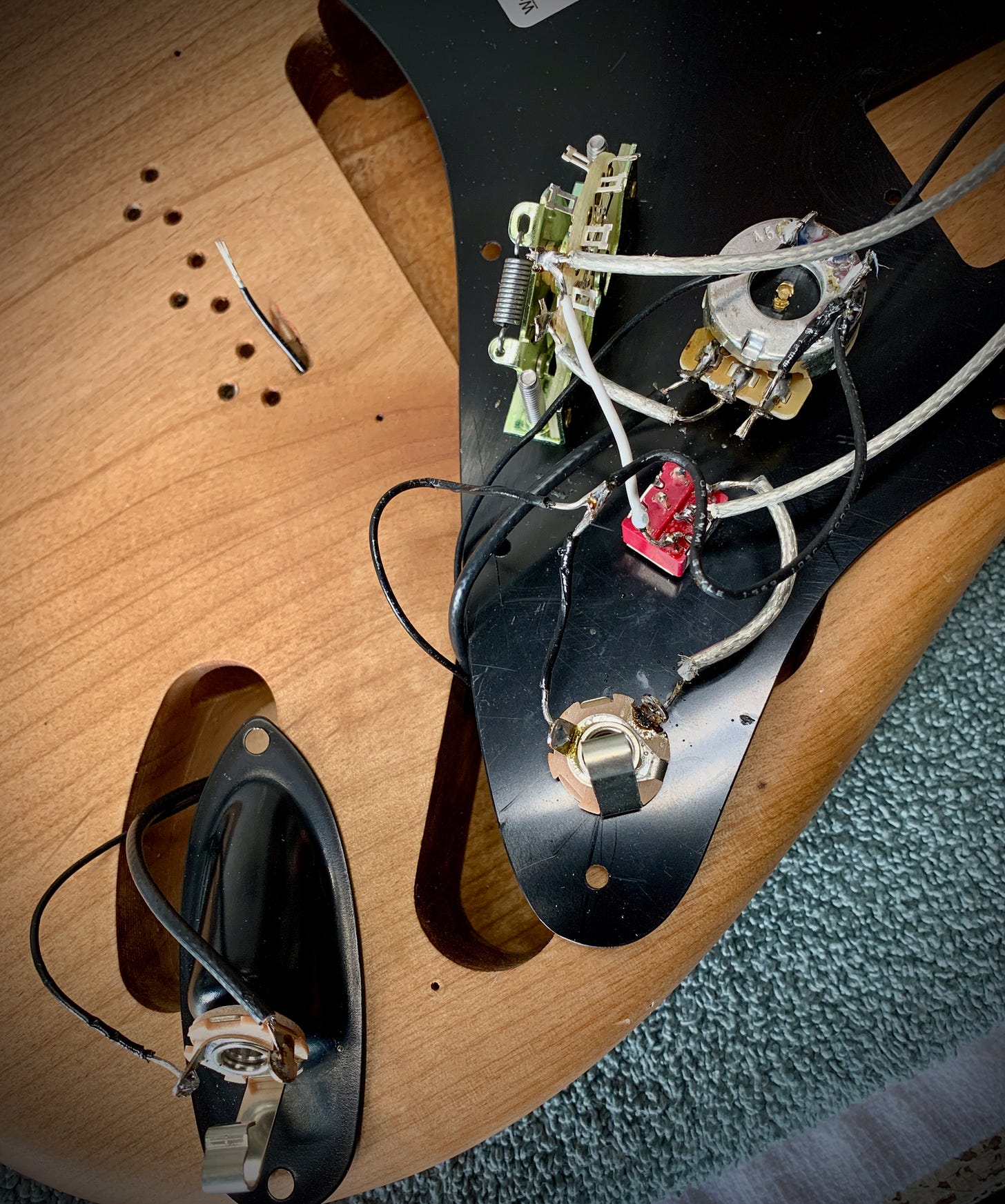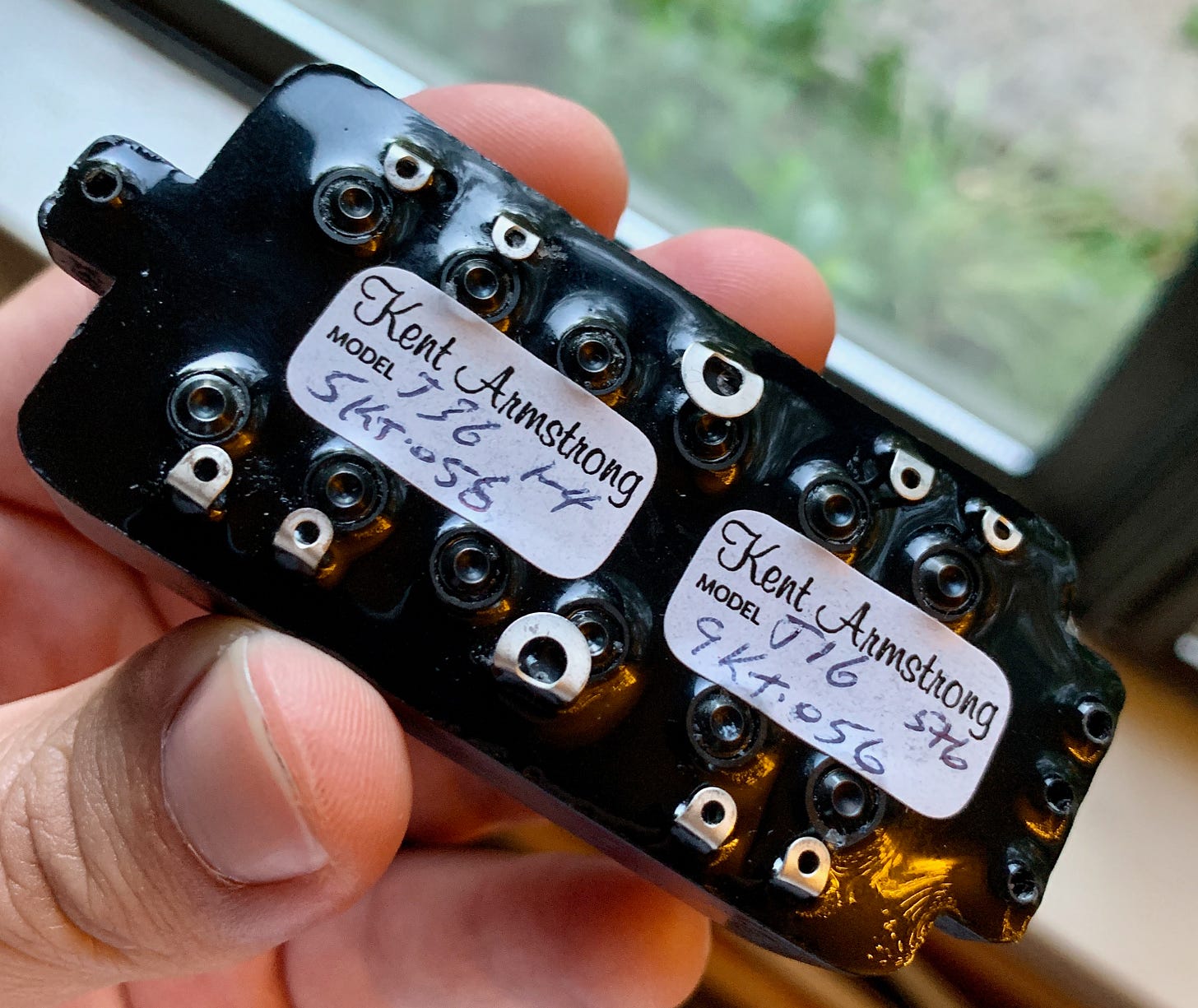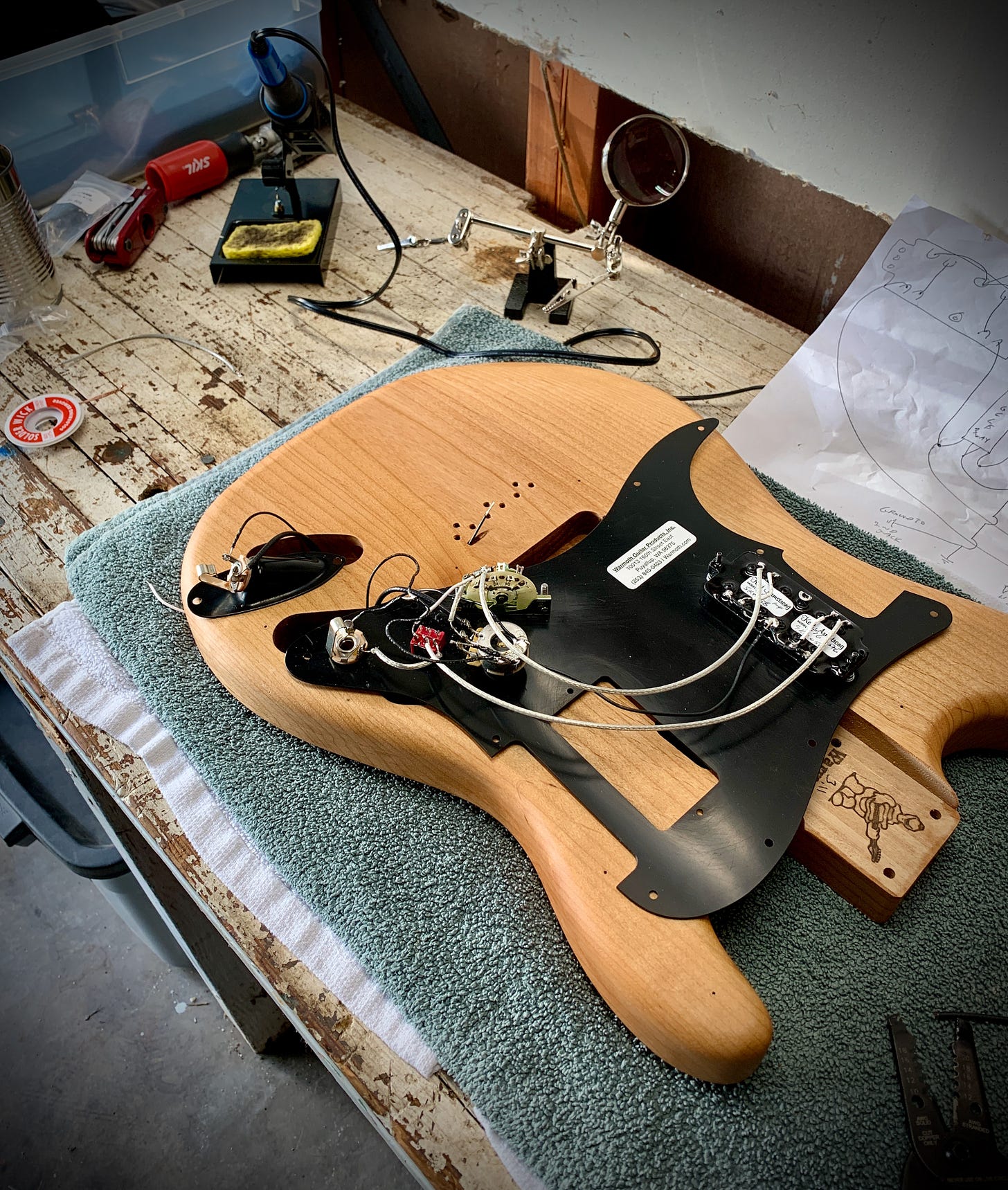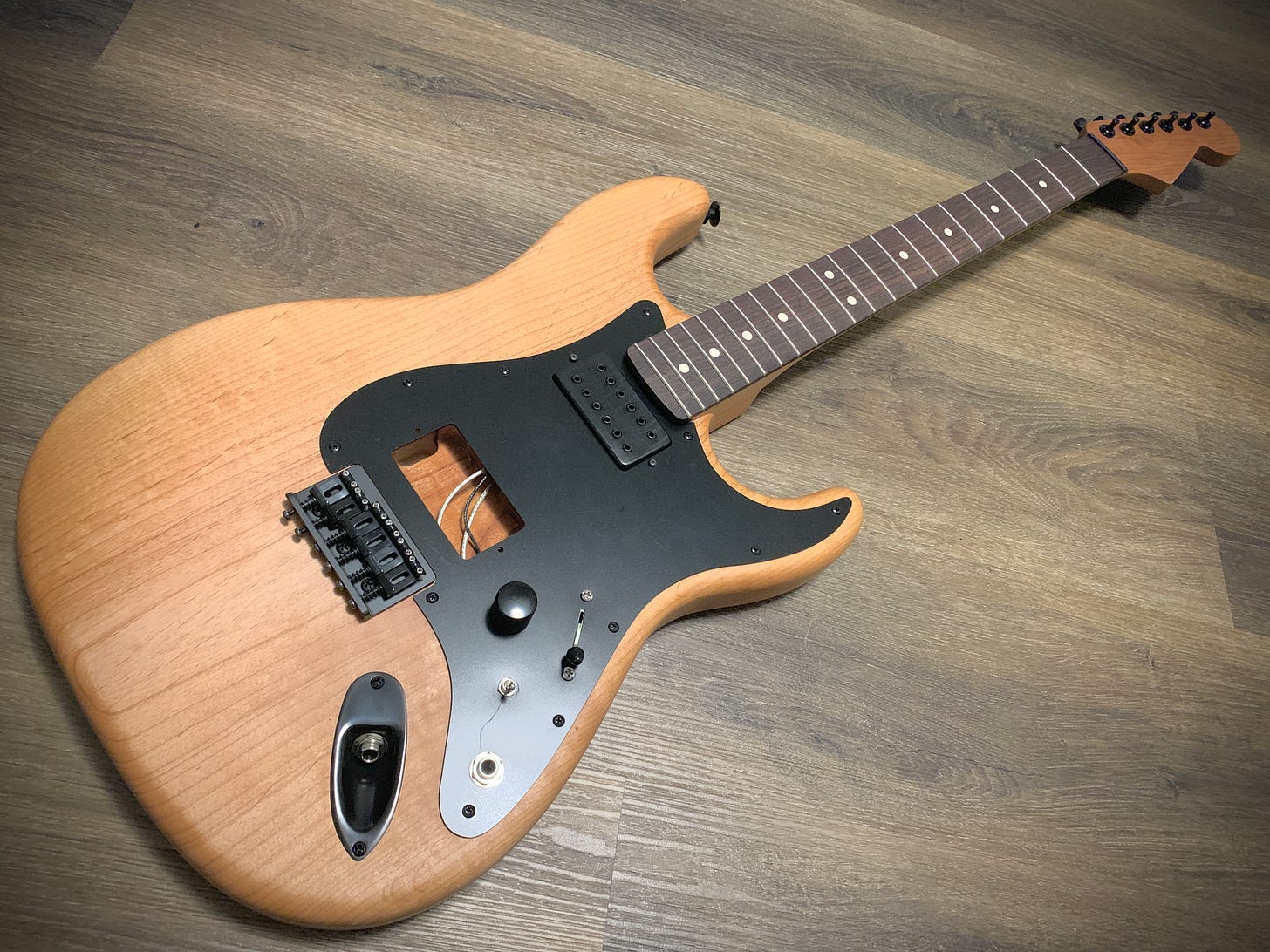If you want a job done right, maybe don't do it yourself.
Building a kit guitar can lead to a lot of cussing.
For some ungodly reason, I recently decided to put together my own kit guitar. The last time I had an idea this good was in high school when I thought it would be slick to back my parents car out of the driveway before turning it on. It turns out, power breaks and power steering require actual power to work. Our neighbor’s Ford pickup truck was never the same.
I suppose the reason I wanted to build my own guitar was because I’d become frustrated with off-the-rack instruments. There’s always something wrong with them: Cracked wood, over-engineered electronics, crooked nuts, lumpy necks, broken truss rods, un-adhered finishes, and peeling top wood. I’ve even spent $4k on a made to order boutique bass that came with bubbly glue-filled fret slots that had been cut in the wrong places, filled in, and re-cut. The lesson learned was that if you want something done right, you have to do it yourself.
Or at least I thought that was the lesson.
Warmoth.com is a beautiful website where one can drool over a visual buffet of guitar and bass parts made from premium woods out of their factory in Oregon. After years of lurking, I finally placed an order. The guitar would be built around a light weight Stratocaster body and a roasted maple neck with rosewood fretboard. Black hardware and pick guard would complete the concept. Not only that, but I would have a hand wound pickup made by none other then Kent Armstrong himself. Why? Because Kent makes Charlie Hunter’s pickups and I was going to build a stereo guitar like Charlie Hunter’s.
Once everything arrived it was time to start building. My wife finished the body with Odie’s Oil and it looked fantastic. Surely I could handle the next steps of drilling a few simple pilot holes and soldering an entire wiring harness from scratch.
Did I mention that soldering involves melting a long piece of lead spaghetti onto metal components using a Harry Potter wand that plugs into the wall and heats up to 500 degrees Fahrenheit?
What a damn nightmare. Apparently, you're supposed to tin the tip so it doesn’t oxidize. One does this by keeping the tip coated with shiny solder so that the underlying metal isn’t exposed. Well guess what? No matter how much Roman water pipe I fed to the soldering iron, the tip would’t stay shiny. Shortly after the application of fresh solder, the tip would burn up like Wile E. Coyote holding a stick of dynamite.
“It’s no big deal,” I told myself. I could simply tin the tip immediately before soldering each connection. For all I know, this could be how soldering is supposed to work. But it was frustrating nonetheless. Especially having to clean the tip with the crappy little sponge that didn’t sit right in my crappy little soldering station that didn’t sit right on my crappy little work bench that doesn’t really sit on the floor right.
And the connections. My goodness, trying to get the wires soldered onto the lugs of the volume pot and input jacks was quite a journey. Everyone on YouTube effortlessly fills in these little rings with a beautiful dab of shiny solder that locks each wire tip in place. Somehow, I managed to drip hot lead all the way down to the bottom of lugs so that it pooled up and required massive cleaning. Then, after multiple attempts at trying to get it right, I realized that I had fried the circuit board that the lugs were connected to. I also fried the casing around a bunch of my ground wire but at least I noticed that while it was happening.
To be honest, once I burned through a volume pot and a few inches of wire, I found my stride. I finished all the wiring, put together the guitar, and tested it out with a couple of strings installed. I swear I’ll never solder again. After all that effort, the guitar doesn’t even work!
Once this instrument finally gets up and running, I’ll try running it in stereo. The lowest 2 strings will go to an octave pedal and bass amp so they sound like a bass. The other 4 strings will go to a guitar amplifier. I’ll share more about the pedal and amp rig in a future post. For now, the struggle continues.





